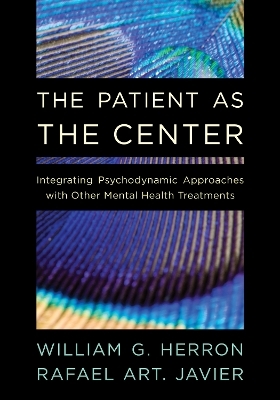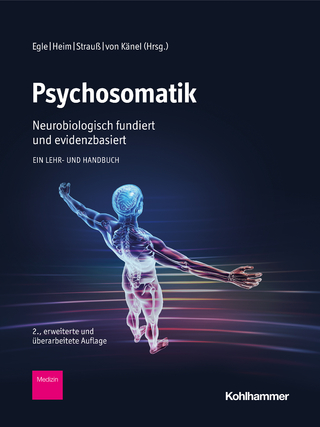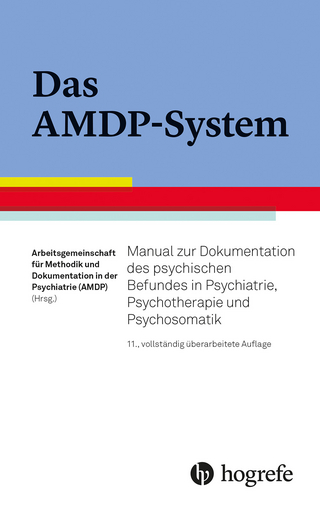
The Patient as the Center
Rowman & Littlefield (Verlag)
978-1-5381-6326-9 (ISBN)
This practical guide shows counselors how to make the healing benefits of psychodynamic “talk therapy” available to any client, including those limited in available sessions by insurance, financial restrictions, or agency policy.
The current mental health system relies on a single model of medication and behavior therapies, motivated by economic expediency rather than treatment quality, which results in a revolving door of treatment that leaves society constantly vulnerable to the impact of mental illness. As a remedy, Integrating Psychodynamic Approaches with Other Mental Health Treatments: The Patient as the Center offers the integration of psychoanalytic and behavioral therapies and practices that are consistently evaluated for effectiveness and customized to each patient’s needs. These include recognition of the complexity of mental illness, possible need for intervention throughout the life cycle, open access to treatment, adequate funding, long-term facilities, consistent retrofitting of treatments, and duration and frequency determined by patient-therapist arrangement. This resource is particularly useful for clinicians in training or early in their careers who are in the process of making decisions about the treatment approaches that make sense for them and their clients, as well as for the more seasoned clinicians jaded by bureaucracy that obstructs best treatment practice and seeking alternative approaches.
William G. Herron is a supervisor in the Psychiatric Residency Program at Bergen New Bridge Medical Center and in independent practice in Woodcliff Lake, NJ. He was professor in the Clinical Psychology Program at St. John's University for forty years and director of Clinical Psychology and of School Psychology during his time there. He was also Faculty, Supervisor, Training Analyst, and Clinical Director at the Contemporary Center for Advanced Psychoanalytic Studies and at the New Jersey Institute for Psychoanalytic Training where he was Training Board Chair. He has authored, co-authored, or coedited fourteen books, primarily with a psychodynamic emphasis, as well as numerous articles. His frequent collaborator is Rafael Javier. His most recent book was Understanding Domestic Violence (2018), and his most recent article was “The Impact of Pluralism” (2019) published in Psychology and Psychological Research International Journal. Rafael Art. Javier is a professor of Psychology and the director of the Post-Graduate Professional Development Programs and the Postdoctoral Certificate Programs in Forensic Psychology at St. John’s University. He was the first, founding director of the Center for Psychological Services and Clinical Studies at St. John's University for almost twenty years. He is also a faculty and supervisor at the Object Relations Institute for Psychotherapy and Psychoanalysis and founding member of the Center of Latin American and Caribbean Studies (CLAS). Dr. Javier has presented at national and international conferences on psycholinguistic and psychoanalytic issues in research and treatment and on ethnic and cultural issues in psychoanalytic theories and practice, including on issues of violence and the impact on general cognitive and emotional functioning. He has published extensively on the subject including several coedited books. His current research includes issues of violence and moral development, suicide in adolescents and young adults, and autobiographical memory and bilingualism. His most recent books include Understanding Domestic Violence: Theories, Challenges, Remedies, co-edited with William Herron, and Assessing Trauma in Forensic Context, coedited with Drs. Elizabeth Owen and Jemour Maddux. He is the editor-in-chief of the Journal of Psycholinguistic Research, and he is on the editorial board of the Journal of Psycholinguistic Research, the Journal of Social Distress and the Homeless, and the Journal of Infant, Child, and Adolescent Psychotherapy. He was the 2017-2018 President of the Forensic Division of the New York State Psychological Association and the past vice-president of the Association of Hispanic Mental Health Professionals. He was appointed as Special Advisor to the Executive Board of the New York State Psychological Association and is a Fellow of the American Psychological Association.
Introduction
Chapter 1: Mental Health Treatment
The Modern Treatment Area
Current Mental Health Delivery
The Next Step
Integrated Psychotherapy
Chapter 2: The Clinical Value of Psychoanalysis
Distinctions
Psychoanalytic Therapy
Identity Diffusion/Confusion
The Personalized Approach
Doing What Works
Symptom Relief
Customized Treatment
Chapter 3: Pluralism: Pathways to Integration
Pluralism in Psychoanalysis
Integration
Drive Reconsidered
Another Step Away
Distinctions from Traditional Psychoanalysis
Diagnosis
Overall Approach
The Relational Turn
Next Step
Chapter 4: Session Notes and Comments
Case #1: Slow Motion
Case #2: If Only
Case #3: The Other Reality
Case #4: More Delusions
Case #5: Not My Fault
Case #6: I am Addicted
Case #7: No Respect
Case #8: Sort of True
Case# 9: The Dream
When It Does Not Work
Chapter 5: The Crooked Path of Effectiveness
Intersectionality
Integration
Some Considerations
Psychoanalytic Training
Disruptions
Further Comments
Integrative Specifics
Etiology
The Non-Analytic Patient
Concluding Remarks
Chapter 6: Psychotherapy Research Outcomes: Possibilities and Limitations
On Determining Core Ingredients for Therapeutic Change
On the Role of Common Factors
A Shifting of Responsibility for Change
Where Are We in Our Scientific Enterprise?
What Are We Left With?
Uniqueness of Psychoanalytic-Focused Interventions
Crisis in the Academy
Concluding Thoughts: In Search of Intellectual Humility
Chapter 7: Language and Its Vicissitude in Bilingual Treatments
A Case of Intersectional Trauma: A Search for Meaning
The Case Synopsis of Ms. G
Multigenerational Trauma
Vicissitudes of a Traumatic Life
I Have Feelings Too: Navigating Her Emotions in Two Languages
In Search of Her Father
On Relying on a Second Language to Forge a New Identity
Concluding Thoughts
Chapter 8: On the Neuroscientific Basis of Intersectional-Colored Trauma and Its Sequalae
Trauma and Its Neurological and Psychic Representation
On the Vicissitude of Self-Development in Traumatic Contexts
On the Intimate Interplay Between a Victim and a Perpetuator
Critical Moments and Trauma Development
The Anatomy of Our Affective State
Clinical Implications
Where Can We Go from Here?
Conclusion
Chapter 9: On Inherent Psychological Factors in Some Criminal Behaviors
Is There a Reasonable Explanation for Criminal Behaviors?
A Psychological Explanatory Model of Criminal Behavior
A View of Criminality in Psychoanalytic Contexts
The Role of Trauma in Criminal Behaviors
Concluding Thoughts
Chapter 10: Summary and Conclusions
References
Index
About the Authors
| Erscheinungsdatum | 27.10.2023 |
|---|---|
| Verlagsort | Lanham, MD |
| Sprache | englisch |
| Maße | 183 x 263 mm |
| Gewicht | 630 g |
| Themenwelt | Geisteswissenschaften ► Psychologie ► Klinische Psychologie |
| Sozialwissenschaften ► Pädagogik ► Didaktik | |
| ISBN-10 | 1-5381-6326-8 / 1538163268 |
| ISBN-13 | 978-1-5381-6326-9 / 9781538163269 |
| Zustand | Neuware |
| Haben Sie eine Frage zum Produkt? |
aus dem Bereich


